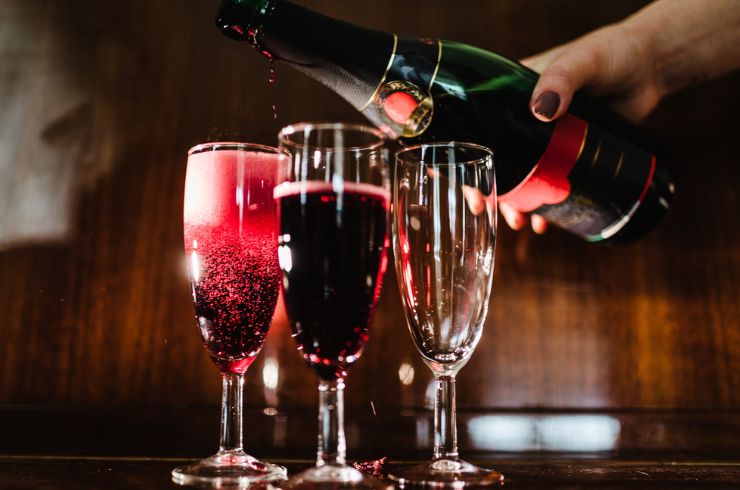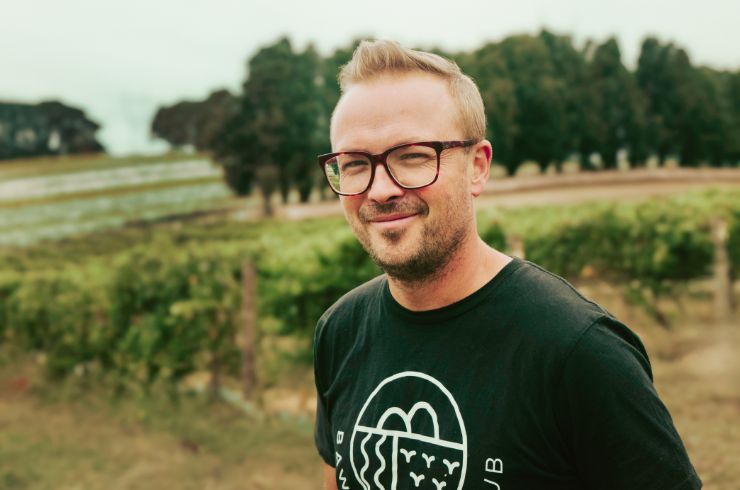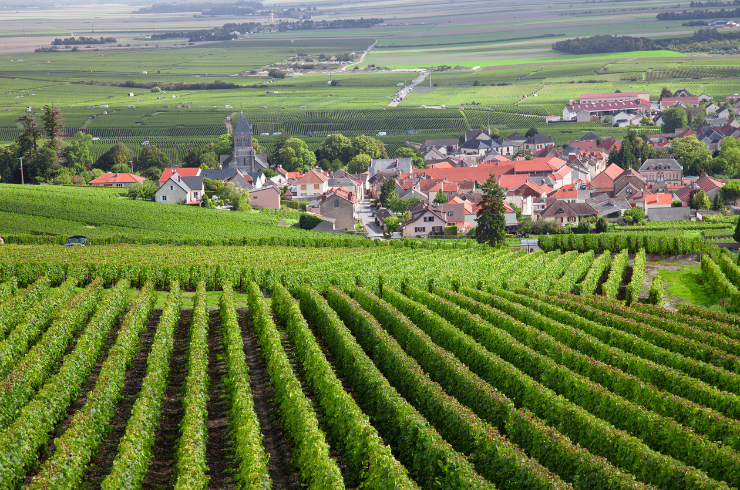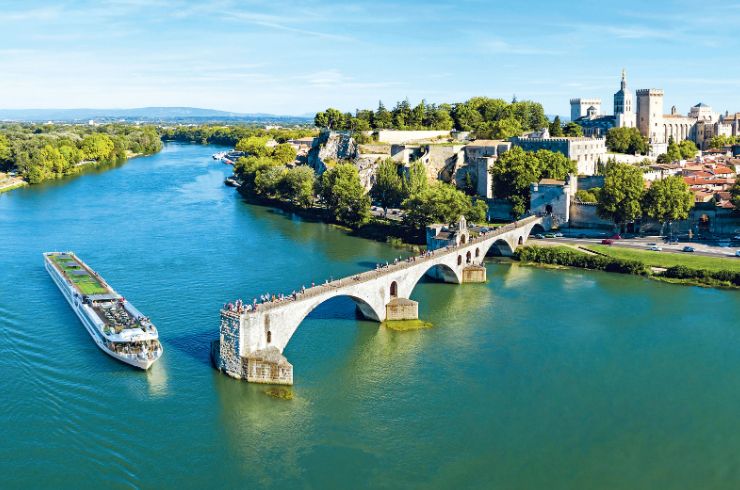Sparkling wine is made all over the world, but there’s only one place that makes Champagne.
Beyond the legal reasons – only sparkling wine made within Champagne can use the name – the region’s unique terroir (particularly its chalky soils) combined with centuries of winemaking history leave a distinct imprint on the wine, which while often imitated is never duplicated.
About two-and-a-half hours’ drive east of Paris, Champagne is a single appellation which contains five main subregions: Montagne de Reims, Vallée de la Marne, Côte des Blancs, Côte de Sézanne and Côte des Bar. Although certain villages within these subregions have a cru status – there are 44 premier cru sites in Champagne and 17 grand cru sites, nine of which are in Montagne de Reims! – unlike in other French regions, it’s the whole village that is rated, not the vineyard site.
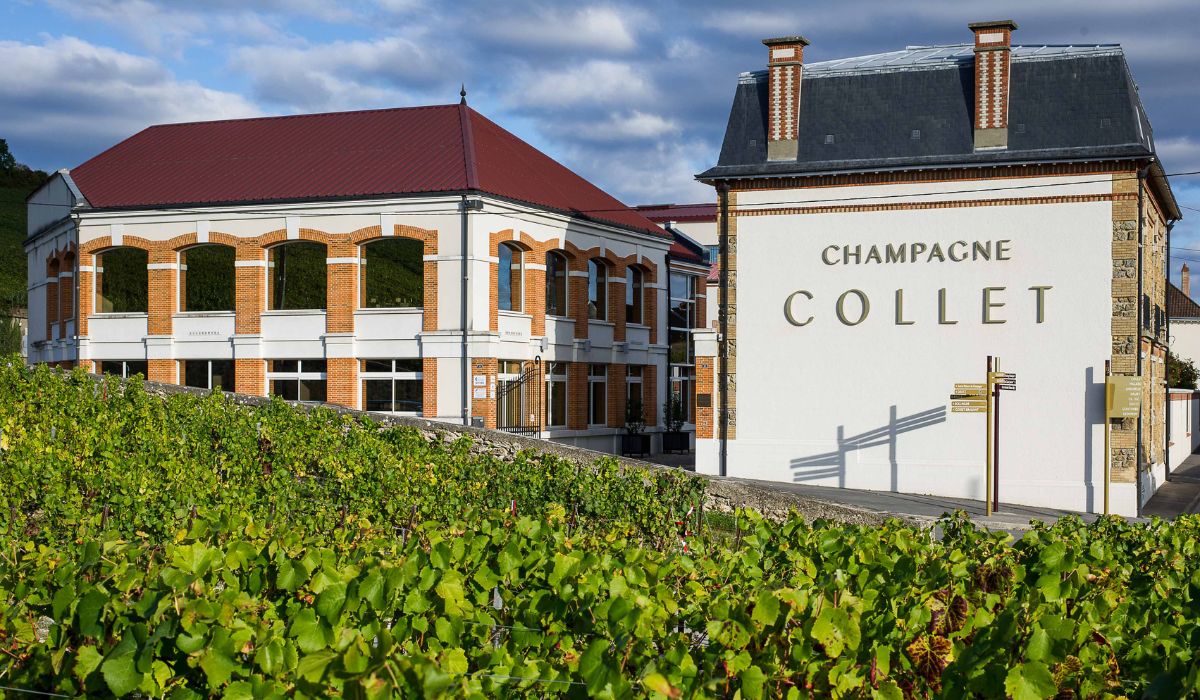
Arbanne, petit meslier, pinot blanc and pinot gris (and as of recently voltis, a complex hybrid grape variety bred to resist fungal diseases) are among the varieties permitted in Champagne, although most are made using chardonnay, pinot noir and pinot meunier. As Champagne is always made using the traditional method, the choice of grapes can play a role in the style – blanc de noirs is made only from red grapes, and blanc de blancs only from white, for example – but it’s not the only factor.
Other styles of Champagne include non-vintage (NV), which is the standard offering from most Champagne houses. It's always made in the house style, which is usually lighter and fresher, and always from multiple harvests to ensure consistency year on year. Vintage wines are made in the best years and are usually more complex (and more expensive!). Rosé Champagne, which can be made either by blending white and red base wines, or by a short maceration, can be made in both NV and vintage styles. And while Champagne can be made in a range of sweetness levels, from brut nature (zéro dosage) to doux (sweet), brut is the most common.
Friday October 24, 2025, is International Champagne Day. Toast with one of the eight Champagnes we've selected in a range of styles for you to try below.
Champagne Billecart-Salmon Le Réserve NV
Le Reserve is a meticulously crafted blend of chardonnay, meunier, and pinot noir from the finest Crus in the Champagne region. It undergoes low-temperature vinification followed by a massive 50 months of ageing on lees, an extra brut dosage and over 50% reserve wines, resulting in a refined and elegant Champagne.
Winemaker Florent Nys says: With its subtle and precise aromas, this cuvée is a reference point amongst Champagnes. The Réserve is a light, fine and balanced Champagne. It is a blend comprising 15 vintages and sourced from the best sites in the Champagne region.
How is this wine best enjoyed? Serve at 8–9°C in a white wine glass.
What is the ultimate food pairing for this wine? The ideal partner for every occasion. It is perfect as an aperitif and can be enjoyed with a wide variety of dishes.
RRP: $115 | Drink now | Website | Shop this wine
Champagne Collet Brut Rosé NV
This Champagne entices with delicate floral aromas that gracefully transition into vibrant notes of citrus, stone fruit, and red berries like mulberry and raspberry. Subtle hints of honey and almond enrich the bouquet. The wine exhibits a light, bright, yellow-straw colour and a fresh, vibrant bouquet. Youthful yet complex, it unveils notes of bready, buttery croissant from its time on yeast lees. The palate is rich and long, with a fluffy texture and a firm, dry finish, elevated by a hint of sweetness from the liqueur. Hints of straw add to the bouquet's complexity, while chardonnay defines the overall character.
Cellar Master Sébastien Walasiak says: What stands out most about this Champagne is its seamless blend of refinement and approachability. It offers an immediate burst of fruit and charm, with depth beneath the surface. There’s a touch of spice, a hint of brioche, and a mineral freshness that speaks of its Aÿ origins. The texture is luxuriously silky, lifted by a fine, persistent mousse that dances across the palate. It’s a wine that feels both celebratory and sophisticated, a rosé Champagne that can shine on its own or elevate any dining experience.
How is this wine best enjoyed? Champagne Collet Brut Rosé NV is best served chilled, but not too cold – around 8–10°C is ideal. The wine truly shines in a tulip-shaped or wider wine glass, enhancing both the bouquet and texture, rather than a narrow flute that restricts its aromatic expression. Take time to let it rest in the glass after pouring; a few minutes of patience rewards you with greater complexity and nuance.
What is the ultimate food pairing for this wine? The Collet Rosé NV is versatile at the table. Its lively acidity and supple texture make it a perfect partner for a wide range of dishes, from fresh seafood to richer poultry and game. Think lobster, crab, or scallops delicately cooked with butter, or sashimi and tuna tartare. It also complements prosciutto or smoked duck and sings alongside roast chicken or duck paired with a cherry glaze. To finish, its red-berry notes pair elegantly with raspberry tarts or white chocolate mousse.
RRP: $120 | Drink to: 2032 | Website | Shop this wine
Champagne Duval-Leroy Brut Réserve NV
A sublime pale gold, highlighted by silvery reflects. Effervescence with fine bubbles. Floral expression alongside the aromatic complexity of almond & toast. Perfectly balanced between finesse and power, it draws out flavours of citrus and white fruits such apple or pear, expressing its subtle, melt-in-the-mouth vinosity.
Chef de cave Sandrine Logette-Jardin says: Since 1859, Champagne Duval-Leroy has been perfecting the quality of its non-vintage Brut Reserve, balancing passion with anaesthetic sensibility. It is in this product that one can taste the unique power and character which marks a top-of-the-range Champagne. The Maison Duval-Leroy reveals in the art of blending pinots and chardonnays. Enriched with around 15 crus and a generous quantity of reserve wines, Duval-Leroy Brut Reserve confirms its complexity and is recognised for its consistency.
How is this wine best enjoyed? Ideal as an aperitif wine. Serve at a temperature of between 8–10°C.
What is the ultimate food pairing for this wine? It's a subtle accompaniment to white meats and delicate fish.
RRP: $90 | Drink to: 2030 | Website | Shop this wine
Champagne De Saint-Gall Le Tradition Premier Cru NV
Wine of marvellous balance, this Champagne is a delicious blend of chardonnay (65%) and pinot noir (35%). Its appearance is an enticing golden colour and it is expressive and refined on the palate with a hint of vinosity.
Winemaker Cedric Jacopin says: This brand is among Champagne's best-kept secrets, subtly supplying many renowned houses with premium juice under their co-op business. With an impressive 70% chardonnay premier cru content, this wine showcases extraordinary elegance and delicacy.
How is this wine best enjoyed? Serve at 8–9°C in a white wine glass.
What is the ultimate food pairing for this wine? An exceptional fermentation with a mineral, chalky style, perfectly complementing seafood or select noble fish served as carpaccio or ceviche.
RRP: $80 | Drink now | Website | Shop this wine
Canard-Duchêne Millésime Brut 2018
 On the eye, a luminous golden color with lovely copper highlights. On the nose, orchard fruit aromas such as apricot, peach and mirabelle plum, sublimated by hints of honey and a slight sweetness. On the palate, freshness and fruitiness are followed by a lovely roundness. The fine, slightly mentholated finish offers a pleasantly long aftertaste.
On the eye, a luminous golden color with lovely copper highlights. On the nose, orchard fruit aromas such as apricot, peach and mirabelle plum, sublimated by hints of honey and a slight sweetness. On the palate, freshness and fruitiness are followed by a lovely roundness. The fine, slightly mentholated finish offers a pleasantly long aftertaste.
Chef de Caves Cynthia Fossier says: The 2018 vintage is a precise blend of 55% pinot noir and 45% chardonnay. The pinot noir is mainly from the Grands Crus of the Montagne de Reims, such as Mailly and Ambonnay, giving structure, generosity and liveliness, and the chardonnay is selected from the Côte des Blancs, from prestigious Crus such as Avize and Vertus, bringing fresh minerality and verticality to this magnificent blend. The result is a sunny, generous wine, the perfect balance between the expression of the year and the fresh, fruity style of Canard-Duchêne.
How is this wine best enjoyed? Canard-Duchêne vintage Champagnes are at their peak when released from the cellars. However, if you wish, you can store them for eight years, away from light, at a constant temperature of between 10–15°C.
What is the ultimate food pairing for this wine? Cod ceviche with yuzu and mango guacamole. Scallop carpaccio in a bergamot vinaigrette. Crispy pavlova with tropical fruits and whipped ginger cream.
RRP: $90 | Drink to: 2033 | Website | Shop this wine
Canard-Duchêne Classic Brut NV
On the eye, a lovely straw-yellow colour with fine bubbles. On the nose, intense fresh fruit aromas, typical of our pinots, together with subtle floral touches. On the palate, a wonderful balance of lightness and luscious indulgence. The full flavour of fresh fruit with apple and plum notes. Aromas of spring foliage, reminiscent of a visit to the florist, are brought out by a delicately toasted flavour.
Cellar master Laurent Fédou says: Our Brut Champagne is crafted in a harmonious, well-balanced style, with emphasis on the freshness and original purity of the fruit. Through precision blending of wines from the current year together with a selection of reserve wines, this wine reveals the best of our terroir, making the most of the intensity of pinot noir. It is the perfect accompaniment for any occasion. Its fresh personality allows the fruit to express its full potential.
How is this wine best enjoyed? Canard-Duchêne Champagnes are at their peak when released from the cellars. However, if you wish, you can store them for between two to three years, away from light, at a constant temperature of between 10–15°C.
What is the ultimate food pairing for this wine? White miso-marinated salmon trout skewers. Mildly spiced pink Champagne lentil falafels. Spring vegetable gazpacho with herby fromage frais.
RRP: $70 | Drink to: 2028 | Website | Shop this wine
Pommery Apanage Brut 1874 NV
Crafted from three outstanding vintages – 2012, 2015 and 2018 – and enhanced by Pommery’s perpetual reserve, it offers a remarkable expression of a multi-vintage blend. Pale yellow with golden reflections and a fine, delicate bead. On the nose, it opens with an enchanting bouquet of white flowers, subtly layered with ripe citrus notes. As it evolves, deeper aromas of acacia honey, toasted brioche and marshmallow emerge, adding complexity. The palate begins with a smooth, light buttery texture, revealing flavours of white nectarine balanced by a freshness and the natural minerality of its terroirs. The finish is full-bodied, elegant and enduring.
Chef de Cave Clément Pierlot says: The release of Apanage Brut 1874 honours the rich history of Maison Pommery, while looking boldly to the future. It encapsulates the essence of Pommery – crafted with the finest terroirs and designed for those who appreciate the artistry of Champagne.
How is this wine best enjoyed? Best served between 8–12 °C in a generous tulip-shaped glass to fully appreciate its complexity. Delightful on its own, yet even more captivating when paired with food.
What is the ultimate food pairing for this wine? As a gourmet Champagne par excellence, the Apanage Brut 1874 redefines the culinary experience through its intricate flavour profile – expressing freshness, salinity, minerality, subtle sweetness, bitterness and umami. The ideal partner for a wide range of gastronomic creations: from oysters, scallops, or lobster in citrus butter, to intricate poultry dishes with truffle, creamy risottos, or even delicately composed Japanese cuisine. Soft cheeses further complement its creaminess, while light desserts like lemon tart or poached white peaches enhance its fruit-forward charm.
RRP: $165 | Drink now | Website | Shop this wine
Champagne Jacquart Brut Mosaïque NV
The nose is fresh and delicate, with notes of white fruits, pear and peach, fresh apricot and white flowers with roses. Dried fruit aromas reveal it is starting to mature. The palate is lush, generous and creamy. Beautiful exuberance driven by white fruits and lemon zest notes on the finish.
Winemaker Joëlle Weiss says: We’ve always had a soft spot for Champagne Jacquart Brut Mosaïque. Bright, elegant, and effortlessly impressive, it’s a beautiful expression of Champagne Jacquart’s signature chardonnay-dominant style. Jacquart works with over 1800 growers across Champagne, giving them access to more than 7 per cent of the region's vineyards and allowing them the ability to select only the finest grapes for this cuvée. This, combined with three years of ageing on lees and a touch of reserve wine, give it depth and texture well beyond its price point. It’s a Champagne that’s both impressive and approachable – just how we like it.
How is this wine best enjoyed? We love Champagne Jacquart Brut Mosaïque for just about any occasion. It’s the kind of Champagne that shines as an aperitif before dinner with friends, or for celebrating life’s big (and small) moments. Serve it nicely chilled at around 8–10°C in a tulip-shaped Champagne flute, and let those beautiful floral and brioche notes open up and its creamy texture take centre stage.
What is the ultimate food pairing for this wine? Champagne Jacquart Brut Mosaïque is a wonderful food Champagne. It’s excellent with seafood – think freshly shucked oysters, seared scallops, or seabass with white butter sauce. It also pairs beautifully with roast chicken, grilled quail, or a bright citrus-dressed salad. And you can never go wrong with soft, creamy cheeses like brie or camembert.
RRP: $110 | Website | Shop this wine
Expand your knowledge with Halliday Wine Academy
Halliday Wine Academy offers an in-depth view of the Australian and international wine landscapes. Select Introduction to Wine to learn about Australian wine and regions or choose from one of our Wines of the World courses to get to know international wines.
Wines of the World: Europe explores the iconic wines, regions and laws of France, Spain, Portugal, Hungary, Germany and Austria, while Wines of the World: Europe and Beyond delves deeper into Italy, Greece, the Americas, South Africa and New Zealand.







